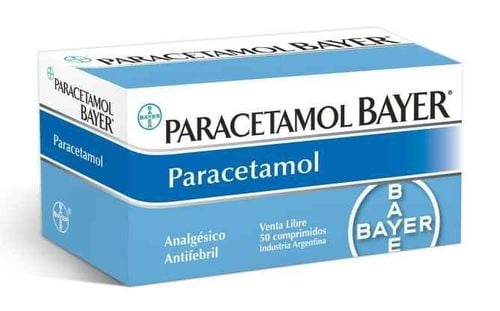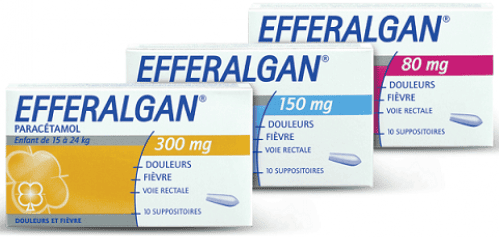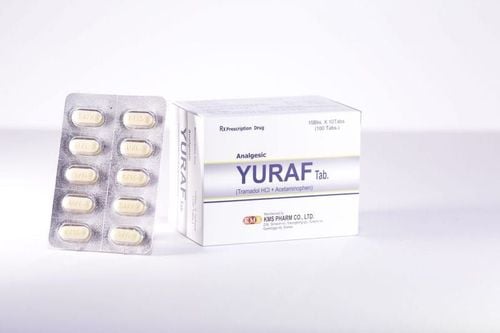This is an automatically translated article.
Midotamol belongs to the group of antipyretic and analgesic drugs, indicated for the treatment of mild to moderate pain. So how to use Midotamol? Let's find out the necessary information about the drug Midotamol through the article below.
1. What is Midotamol?
Midotamol medicine contains Paracetamol content 325mg, Tramadol content 37.5mg and other excipients just enough provided by the manufacturer. The drug is prepared in the form of film-coated tablets, packed in a box of 5 blisters, each blister has 10 tablets.2. What does Midotamol do?
Midotamol is indicated for the treatment of the following cases:
Treatment of cold and fever symptoms such as rhinitis, runny nose, stuffy nose, cough, watery eyes. Support pain relief from mild to moderate such as toothache, headache, abdominal pain, muscle aches. Midotamol is contraindicated in patients with one of the following conditions:
Allergy to the active ingredients Paracetamol and Tramadol or other excipients in the composition of the drug. Breastfeeding women.
3. Dosage and how to use Midotamol
Midotamol is prepared in the form of film-coated tablets, taken orally with filtered or boiled water. The drug is not affected by food, so it can be taken at any time of the day.
The following is the recommended dose of Midotamol:
Adults and children over 12 years: Take a maximum dose of 1 to 2 tablets every 4 to 6 hours and not to exceed 8 tablets in a day. Children under 12 years of age: The safety and effectiveness of this drug have not been studied in this population. Elderly people (over 65 years old): Use with the same dose as that of normal people. Clinical manifestations of drug overdose may be signs or symptoms of poisoning with active ingredients Tramadol, Paracetamol or both, specifically:
Tramadol: Respiratory depression, coma, convulsions, cardiac arrest and death death. Paracetamol: Used in high doses can cause liver toxicity in some patients. Early symptoms that may occur when the liver is damaged by an overdose of Paracetamol include: Gastrointestinal irritation, loss of appetite, nausea, vomiting, irritability, paleness, sweating. These symptoms may appear 48 to 72 hours after taking the drug. This dosage is only the dosage recommended by the manufacturer. Depending on the medical condition of each patient, the doctor will prescribe the appropriate dose. Therefore, patients need to follow the doctor's instructions, do not change the dose or give the medicine to others when having similar symptoms.
4. Side effects of the drug Midotamol
Doctors always consider between the benefits that Midotamol brings to the patient and the possible risk of side effects to prescribe the appropriate medication. Patients must follow the doctor's instructions to limit the occurrence of unwanted effects. Midotamol is generally well tolerated, and side effects are usually mild and transient. Some side effects may be encountered during the use of the drug as follows:
Common: Usually occurs on the central nervous system and digestive system such as nausea, dizziness, dizziness, drowsiness. Uncommon: Asthenia, fatigue, irritability, headache, abdominal pain, constipation, diarrhea, flatulence, dry mouth, vomiting, anorexia, anxiety, confusion, agitation, insomnia, nausea ferret, pruritus, rash, increased sweating, urticaria. Rare: Anxiety, insomnia, dry mouth, chills, hypotension, dizziness, black stools due to gastrointestinal bleeding, tongue edema. In the event that a patient experiences any of the above effects while taking the drug, immediately notify the treating physician for advice.
5. Midotamol drug interactions
Tell the doctor about all the drugs the patient is using such as prescription drugs, over-the-counter drugs, functional foods, herbs... to limit interactions when using a combination of drugs in treatment process.
Some possible interactions when Midotamol is combined with other drugs below:
Concomitant use with MAO inhibitors or Serotonin reuptake inhibitors may increase the risk of these effects. side effects, including seizures and Serotonin syndrome. Concomitant administration of carbamazepine drugs significantly increases the metabolism of midotamol. The analgesic effect of this drug may be reduced when patients take it with Carbamazepine. Co-administration with Quinidine will increase the content of Midotamol. When co-administered with substances of the Warfarin class, there is a risk of disturbance of the external coagulation time, therefore periodic evaluation of coagulation parameters in some patients is required.
6. Notes when taking Midotamol
Some notes when patients taking Midotamol are as follows:
Only use the drug for pregnant and lactating women unless specifically directed by a doctor, after considering the benefits of the drug. and potential risks to the fetus as well as to the nursing infant. Midotamol should be used with caution in the elderly, because this subject often has impaired liver and kidney function, so the risk of drug accumulation is quite high. Patients should be tested for liver and kidney function before the doctor prescribes treatment with Midotamol. In people who drive or operate machinery, it is necessary to pay attention to the possible side effects such as headache, dizziness caused by the drug. Therefore, it is possible to suspend work until it is certain that the drug affects the patient. There is a risk of seizures when Midotamol is co-administered with SSRIs (serotonin reuptake inhibitors), TCAs (tricyclic compounds), opioids, MAOIs, tranquilizers or drugs that lower the seizure threshold or above. epileptic patients, risk and history of seizures. Caution should be exercised when using Midotamol in patients at risk of respiratory depression or taking high doses of Midotamol with local anesthetics, anesthetics, and alcohol. Caution should be exercised when co-administering with central nervous system depressants such as alcohol, opioids, local anesthetics, anesthetics, hypnotics and sedatives. Use with caution in patients with increased intracranial pressure or head trauma. The risk of relapse may occur when Midotamol is administered to patients with opiate addiction. Use with caution in patients with chronic alcoholism because of the risk of hepatotoxicity. Renal while the patient with an overdose of Midotamol is taking Naloxone for management, there may be an increased risk of convulsions. For patients with creatinine clearance less than 30 ml/min, a dose of no more than 2 tablets every 12 hours is recommended. Use with caution in patients with severe hepatic impairment. Do not use in combination with other drugs containing Paracetamol and Tramadol ingredients, because the exact dose cannot be controlled. Above is information about uses, dosage and precautions when using Midotamol. To ensure safety for your health and maximize the effectiveness of your treatment, you need to take Midotamol exactly as directed by your doctor.













